How Artificial Grass Can Provide Relief for Allergy Sufferers
Millions of individuals worldwide suffer from allergies, which are becoming more common in today's culture. For allergy patients, outdoor activities can be difficult due to common triggers including pollen, dust mites, and grass. But artificial grass, which was formerly only found on athletic fields, is now being considered a feasible option for relieving allergy symptoms. This article looks at how artificial grass can help people with allergies, how it affects the environment, and how it's becoming more and more popular as a grass substitute.
The Allergy Epidemic
When the immune system overreacts to things that are often safe for other people, allergies develop. Outdoor allergies are frequently brought on by grass pollen, which can cause symptoms including sneezing, runny noses, itchy eyes, and in severe situations, asthma attacks.

These allergies can make it difficult for many people to enjoy the outdoors and engage in their favorite hobbies.
The Rise of Artificial Grass
Synthetic turf, commonly referred to as artificial grass, was first created as a substitute for real grass for athletic grounds. However, its advantages now go beyond the world of athletics, particularly for allergy patients. Artificial grass closely resembles real-looking artificial grass in appearance and feel and is comprised of synthetic materials such as nylon, polyethylene, or polypropylene.
Benefits for Allergy Sufferers
Pollen-Free Environment: The absence of pollen is one of artificial grass' most important benefits for allergy patients. Artificial grass eliminates a significant allergy source that afflicts many outdoor spaces because it doesn't produce pollen.
Reduced Irritants: Dust mites, mold, and other allergen-containing substances may be present in natural grass. Allergies can develop when these irritants are stirred up by mowing or other disturbances to the grass.

Artificial grass lowers the chance of exposure because it doesn't create a favorable environment for these allergens to flourish.
Low-Maintenance Landscaping: Regular mowing, watering, and fertilizing of natural grass are necessary but might cause problems by kicking up allergic particles. Artificial grass is a desirable alternative for allergy sufferers because it requires no upkeep and doesn't need to be fertilized or mowed.
Year-Round Enjoyment: Regardless of the season or the weather, artificial grass keeps its lush appearance. In order to peacefully enjoy their outside spaces, allergy sufferers don't need to wait for the pollen season to pass.

Pet-Friendly: Another common allergy is pet dander. Since artificial grass is easy to maintain and resistant to pet pee, there is less chance of allergy buildup.

Shamrock 40mm Artificial Grass
Environmental Considerations
While allergy sufferers can find relief from artificial grass, its manufacture, and disposal raise environmental questions. Synthetic turf is made using techniques that require a lot of energy and non-biodegradable ingredients. Its inability to disintegrate organically can also make disposal difficult.
Manufacturers are looking into more environmentally friendly production techniques and recyclable materials to allay these worries. There are several environmentally friendly choices becoming available, including recycled-material artificial grass, bio-based polymers, and enhanced turf recycling programs.
The Growing Popularity of Artificial Grass
Artificial grass is becoming more and more popular, thanks to its advantages for allergy patients as well as its adaptability and aesthetic appeal. In order to create allergy-friendly landscapes that require little maintenance, homeowners, companies, and municipalities are turning to artificial grass. Aesthetic, low-allergen environments are being created in residential yards, parks, playgrounds, and business locations.
Installation and Maintenance
The advantages of artificial grass for allergy sufferers can be greatly increased with proper installation and maintenance:
Preparation: To ensure good water drainage and minimize standing water, which can provide a breeding ground for allergens, professional installation requires preparing the ground with sufficient drainage and suitable base material.
Cleaning: Regular cleaning minimizes the accumulation of allergens and guarantees a clean surface. Regular cleaning includes hosing down the fake grass and using a sharp brush to remove dirt.
Disinfection: The fake grass can be periodically disinfected to help minimize bacteria and odors, fostering a healthier outdoor atmosphere.
Grooming: By keeping the artificial grass blades upright, brushing improves the appearance of the turf and helps to avoid matting.
The presence of allergens like pollen and dust mites makes it difficult for allergy patients to enjoy the outdoors. By creating a pollen- and allergen-free outdoor space, artificial grass offers a solution. Both households and businesses find it to be an appealing alternative due to its resemblance to natural grass and its low care needs. Artificial grass will likely become an even more popular option for consumers as manufacturers continue to address environmental issues through the use of sustainable materials and enhanced recycling techniques.
Also, if you are looking for good options for Rugs, Carpets, and Vinyl Flooring please click below to visit:



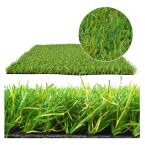

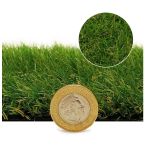


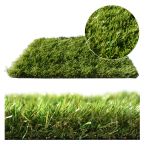


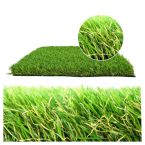
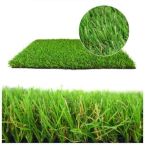

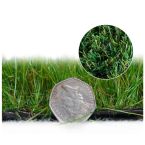







 >
>